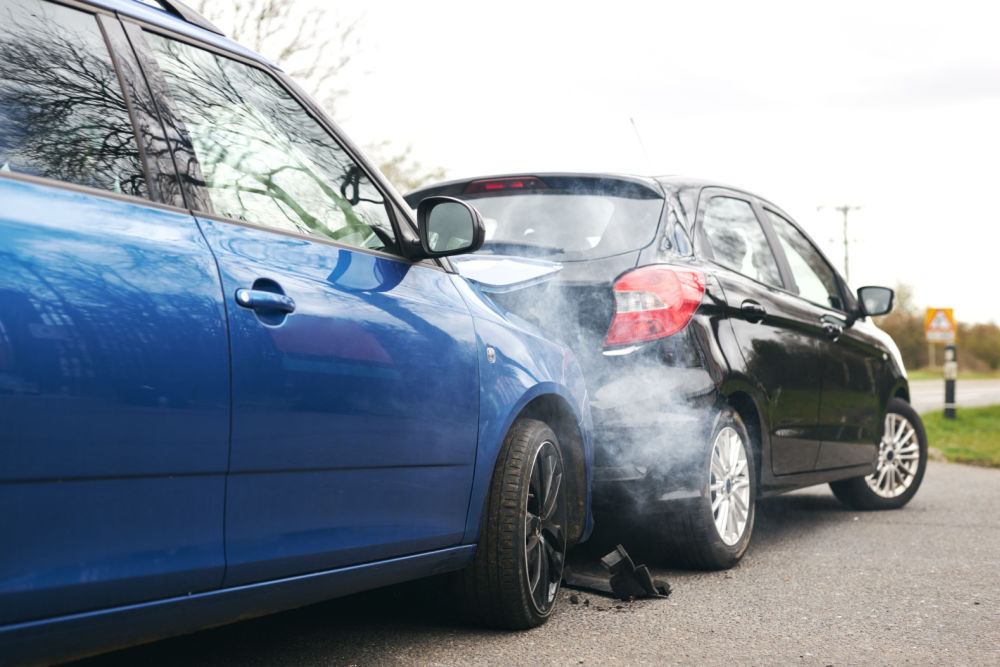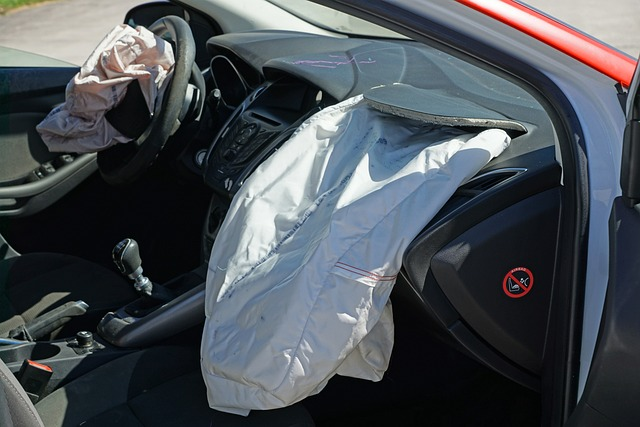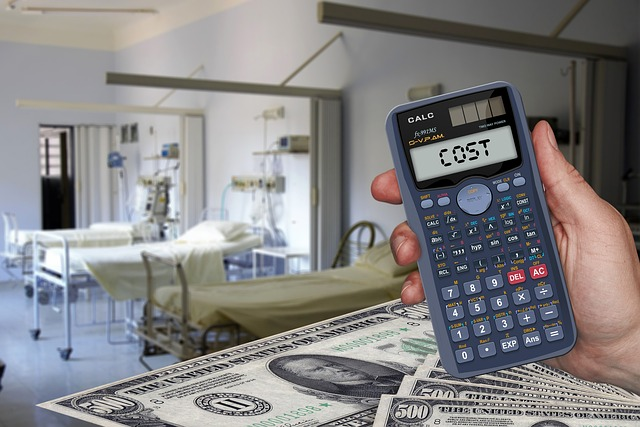Introduction
Rear-end collisions are among the most common types of car accidents, often resulting in injuries and property damage. If you've been involved in one, you may be wondering about the average car accident settlement amount for a rear-end collision. In this article, we'll discuss the factors that affect your car accident settlement claims, the car accident settlement amount amount amounts, how fault is determined, insurance company negotiations, and the role of the personal injury lawyers and attorneys.

Factors Affecting Rear-End Collision Settlements
Several factors can influence the amount of a rear-end collision settlement. These include:
Severity of Injuries
The severity of the injuries sustained by car, accident victim or claim, accident victim in a serious rear ended front-end collision will significantly impact the settlement amount. More severe injuries generally result in higher compensation.
Types of Injuries
Rear-end collisions can result in a variety of injuries, ranging from minor to severe. The type and severity of these rear end accidents and crash injuries depend on several factors, including the speed of the vehicles involved in the rear end accidents or car accident, the position of the occupants in the vehicle, and the use of safety devices such as seat belts and airbags.
Some of the most common physical injuries sustained in a rear-end collision include:
- Whiplash: Whiplash is a neck injury that occurs when the head suddenly jerks backward and forward, causing strain to the muscles, tendons, and ligaments in the neck. It is one of the most common injuries sustained in rear-end collisions, particularly in low-speed accidents.
- Back injuries: Rear-end collisions can cause back injuries such as herniated discs, sprains, and strains. These injuries can cause pain, numbness, and tingling in the back, legs, and feet.
- Head injuries: Head injuries are also common in rear-end collisions, particularly if the occupant's head strikes the steering wheel or dashboard. These injuries can range from minor bumps and bruises to more severe injuries such as concussions and traumatic brain injuries.
- Chest injuries: Chest injuries can occur in rear-end collisions due to the force of the impact. These injuries can range from minor bruising to more severe injuries such as broken ribs and lung damage.
- Psychological injuries: Rear-end collisions can also cause psychological injuries such as anxiety, depression, and post-traumatic stress disorder (PTSD). These injuries can have a significant impact on a person's quality of life and may require ongoing treatment.

Vehicle Damage
In addition to the serious injuries themselves, rear-end collisions can also cause significant property damage to the vehicles involved. The extent of the serious property damage also depends on several factors, including the speed of the vehicles at the time of the rear end crashes collision and the position of the vehicles at impact.
Some of the most common types of vehicle damage that can occur in a rear-end collision include:
- Bumper damage: The rear bumper is often the first point of impact in a rear-end collision. As a result, it is common for the bumper to sustain damage, such as dents, scratches, and punctures.
- Trunk damage: The trunk of the vehicle can also sustain damage in a rear-end collision, particularly if the impact was severe. The trunk lid may become misaligned or may not close properly, and the rear lights may be damaged or broken.
- Frame damage: If the impact was severe enough, the frame of the vehicle may sustain damage. This can cause misalignment of the wheels and suspension, affecting the vehicle's ability to drive properly.
- Exhaust system damage: The exhaust system may become damaged in a rear-end collision, particularly if the impact was severe. This can cause problems with the vehicle's emissions and may require repairs or replacement.
- Total loss: In some cases, the damage sustained in a rear-end collision may be so severe that the vehicle is considered a total loss. This means that the cost of repairs exceeds the value of the vehicle, and it is no longer safe to drive.
It's important to remember that vehicle damage can vary significantly depending on the specific circumstances of the collision. Even if the damage appears minor, it's essential to have a professional inspect the vehicle to ensure that it is safe to drive and that any necessary repairs are made. Additionally, documenting the damage with photographs and obtaining estimates for repairs can help support your insurance claim or personal injury lawsuit.

Lost Wages
"Lost" lost income, or wages lost income can be a significant concern for individuals involved in a rear-end collision, particularly if their injuries prevent them from working. Lost income or wages lost income can refer to the income that a person loses as a result of being unable to work due to their injuries.
If you've been involved in a rear-end collision and are unable to work due to your injuries, you may be entitled to compensation for your lost wages. This compensation can cover both past and future lost wages and may be included as part of a settlement or court award.
To calculate lost wages, several factors are considered, including the following:
- Pre-accident income: Your pre-accident income is an essential factor in calculating lost wages. This includes any regular income, such as wages or salaries, as well as any additional income, such as bonuses or commissions.
- Time missed from work: The amount of time you miss from work due to your injuries is also taken into account when calculating lost wages. This includes any time off for medical treatment or recovery.
- Ability to return to work: If your injuries prevent you from returning to work at your previous level of employment, your lost wages may be adjusted to reflect this.
- Future earning potential: If your injuries affect your ability to work in the future, your lost wages may also consider your future earning potential.
Calculating lost wages can be complex, particularly if your income is irregular or if you're self-employed. In these cases, it's often necessary to consult with an experienced personal injury attorney who can help you calculate and negotiate a fair settlement for your lost wages.

Medical Expenses
Medical expenses are often a significant concern for individuals involved in a rear-end collision. These expenses can quickly add up and become a financial burden, particularly if the injuries sustained by rear end or car accident victims are severe or require ongoing medical treatment. Medical expenses from rear ended or car accidents can include a wide range of costs associated with diagnosing, treating, and recovering from the injuries sustained in a rear-end collision.
Some of the most common medical expenses incurred after a rear-end collision include:
- Emergency room visits: Immediately following a rear-end collision, you may need to visit the emergency room for urgent medical care. Emergency room visits can be costly, especially if diagnostic tests such as X-rays, CT scans, or MRIs are required.
- Hospitalization: In more severe cases, a rear-end collision may result in injuries that require hospitalization. The cost of a hospital stay can be substantial and may include fees for room and board, medications, and other necessary treatments.
- Doctor visits: Following a rear-end collision, you may need to see a doctor or specialist for follow-up care and ongoing treatment. These visits can also contribute to your medical expenses.
- Physical therapy: If your injuries require rehabilitation, you may need to undergo physical therapy. This can include multiple sessions with a physical therapist, which can add to your medical expenses.
- Prescription medications: Depending on the nature of your injuries, you may require prescription medications to manage pain, inflammation, or other symptoms. The cost of these medications can contribute to your overall medical expenses.
- Medical equipment: In some cases, you may require medical equipment, such as crutches, braces, or wheelchairs, to aid in your recovery. The cost of this equipment can also be included in your medical expenses.
- Home modifications: If your injuries result in long-term or permanent disability, you may need to make modifications to your home, such as installing ramps or widening doorways, to accommodate your needs. These modifications can be expensive and may be included in your medical expenses.
If you've been involved in a car accident claim a rear-end collision and have incurred serious medical bills and expenses as a result of your injuries, you may be entitled to compensation for these costs. This compensation can be sought through an insurance claim or a personal injury lawsuit. To ensure that you receive fair compensation for your medical bills and expenses, it's essential to keep detailed records of all your medical treatments and their associated costs, and to consult with an experienced personal injury attorney who can help you navigate the legal process to both seek medical treatment and expenses related to treatment.

Pain and Suffering
Pain and suffering is a term used to describe the non-economic damages a person may experience as a result of spinal injuries from a serious rear end car accident or other rear end car accidents or front-end collision. While medical expenses and lost wages are considered economic damages, pain and suffering encompass the physical and emotional distress a person experiences due to their injuries. It is an important aspect of personal injury claims, as it seeks to compensate the individual for the impact the rear end car accident injuries has had on their overall quality of life.
Some factors that contribute to pain and suffering in a rear-end collision include:
- Physical pain: The pain resulting from injuries sustained in a rear-end collision can vary in intensity and duration. This can include acute pain experienced immediately after the accident, as well as chronic pain that persists long after the initial injury has healed.
- Emotional distress: Rear-end collisions can cause emotional distress, such as anxiety, depression, or post-traumatic stress disorder (PTSD). These psychological effects can have a significant impact on a person's overall well-being and their ability to return to their normal daily activities.
- Loss of enjoyment of life: Pain and suffering can also include the loss of enjoyment of life, which refers to the decreased ability to participate in activities or hobbies that the individual once enjoyed before the accident.
- Impact on personal relationships: Injuries from a rear-end collision can strain personal relationships, as the injured individual may be unable to fulfill their roles as a spouse, parent, or friend due to their physical or emotional limitations.
- Sleep disturbances: Injuries and the associated pain can also lead to sleep disturbances, further affecting a person's overall quality of life.
Calculating pain and suffering in a rear-end collision can be challenging, as it is subjective and varies from person to person. One common method is the "multiplier method," which involves multiplying the total economic damages (e.g., the future medical costs, bills, expenses and lost wages) by a certain number (usually between 1.5 and 5) to determine a reasonable value for pain and suffering. Another method is the "per diem" approach, which assigns a daily value to the pain and suffering and multiplies it by the number of days the injured person has been affected.
It's important to remember that each case is unique, and the value of pain and suffering will depend on the specific circumstances of the accident and the severity of the injuries sustained. To ensure that you receive fair compensation for your pain and suffering, it's essential to consult with an experienced personal injury attorney who can help you navigate the legal process and negotiate a fair settlement on your behalf.
Average Settlement Amounts
While it's difficult to pinpoint an exact average settlement amount for rear-end collisions, they typically range from a few thousand dollars for minor incidents to tens or even hundreds of thousands of dollars for severe accidents. It's important to remember that each case is unique, and the settlement amount will depend on the specific factors involved.
Determining Fault in a Rear-End Collision
Driver Negligence
Driver negligence is a key factor in determining fault and liability in rear-end collisions. Negligence occurs when a driver fails to exercise a reasonable level of care and caution while operating their vehicle, resulting in an accident. In many rear-end collisions, the driver who rear-ends another vehicle is considered negligent and at fault for the accident. Some common examples of driver negligence in rear-end collisions include:
- Distracted driving: Distracted driving is one of the leading causes of rear-end collisions. When a driver is not paying full attention to the road, they may not notice that the vehicle in front of them has stopped or slowed down, leading to a collision. Common distractions include texting, talking on the phone, eating, or adjusting the radio.
- Tailgating: Following another vehicle too closely, or tailgating, is another form of driver negligence that can lead to rear-end collisions. Drivers should maintain a safe following distance to allow enough time to react if the vehicle in front stops or slows down suddenly.
- Speeding: Excessive speed can contribute to rear-end collisions, as it reduces the amount of time a driver has to react to changes in traffic conditions. Speeding drivers may not be able to stop in time to avoid colliding with the vehicle in front of them, especially in situations where traffic is congested or road conditions are poor.
- Aggressive driving: Aggressive driving behaviors, such as weaving in and out of traffic, can lead to rear-end collisions. These behaviors increase the likelihood of a driver misjudging distances or not reacting quickly enough to avoid a collision.
- Driving under the influence: Driving under the influence of alcohol or drugs can significantly impair a driver's ability to operate their vehicle safely, increasing the risk of rear-end collisions. Impaired drivers may have slowed reaction times, poor judgment, and reduced coordination, all of which can contribute to accidents.
- Failing to adapt to road conditions: Drivers are responsible for adjusting their driving behavior based on the road and weather conditions. Failing to do so can be considered negligence. For example, if a driver does not slow down during heavy rain or on icy roads, they may be unable to stop in time to avoid a rear-end collision.
- Failing to maintain the vehicle: Neglecting regular vehicle maintenance, such as ensuring brakes are functioning properly, can also contribute to rear-end collisions. A driver may be considered negligent if their failure to maintain their vehicle results in an accident.
In rear-end collision cases, establishing driver negligence is crucial for determining fault and liability. An experienced personal injury attorney can help gather evidence, such as police reports, witness statements, and expert testimony, to prove negligence and build a strong case for compensation.
Comparative Negligence
Comparative negligence is a legal concept used in some jurisdictions to determine the extent of each party's liability in an accident, including rear-end collisions. This concept recognizes that multiple parties may share responsibility for an accident and assigns a percentage of fault and economic damages to each party involved rear end accident. The injured party's compensation for economic damages is then reduced based on their percentage of fault.
In some common car accident injuries cases in the context of rear-end collisions, comparative negligence may come into play if both drivers share some responsibility for the car accident itself. Here are some scenarios where comparative negligence might be relevant in common car accident cases with injuries from a rear-end collision:
Sudden stops: If the lead vehicle suddenly stops without warning or for no apparent reason, the driver may be considered partially at fault for the rear-end collision, even if the following driver was also negligent (e.g., by tailgating or being distracted).
Non-functioning brake lights: If the lead vehicle has non-functioning brake lights, it could be considered partially at fault for the rear-end collision. The driver of the following vehicle might not have been able to see that the lead vehicle was braking, leading to the collision.
Reckless lane changes: If the lead vehicle makes a sudden or reckless lane change, cutting off the following vehicle and causing a rear-end collision, the lead driver may share some responsibility for the accident.
Illegal maneuvers: If the lead vehicle is engaged in an illegal maneuver, such as an improper U-turn, and causes a rear-end collision, the lead driver may be considered partially at fault.
Poor road conditions: In some cases, both drivers may share responsibility for the accident if they failed to adapt their driving behavior to poor road or weather conditions, leading to a rear-end collision.
In jurisdictions that apply comparative negligence, each party's percentage of the at fault party amount is determined, and the injured party's compensation is reduced accordingly. For example, if the severely injured third party is found to be 30% at fault for the rear-end collision, their compensation would be reduced by 30%.
It's essential to consult with an experienced personal injury attorney who can help you understand the comparative negligence laws in your jurisdiction and build a strong case for compensation.
Insurance Companies and Settlement Negotiations
Initial Offers
After a rear-end collision, you may receive an initial settlement offer from the at-fault driver's insurance company. This offer is usually the first attempt to resolve the claim and may be made before the full extent of your injuries and damages are known.
The initial settlement offer is typically a lowball offer, which means it is much lower than what you may be entitled to receive in compensation. Insurance companies may use this tactic to save money and settle claims quickly. It's important to understand that you are not required to accept the initial offer, and you have the right to negotiate for a fair settlement.
When evaluating an initial settlement offer, it's important to consider the following:
The scope of the offer: The initial offer may only cover a portion of your medical expenses or lost wages. It's important to carefully review the offer and determine whether it includes all of your damages and losses resulting from the rear-end collision.
Your future medical expenses: If you have sustained severe injuries, you may require ongoing medical treatment, which can be costly. Ensure that the initial offer takes into account your future medical expenses and any long-term or permanent disabilities resulting from the accident.
Pain and suffering: Pain and suffering are not always included in the initial offer. These damages can be subjective and difficult to quantify, but they are a significant component of personal injury claims.
Liability: If liability for the accident is still in question, it may be best to consult with an experienced personal injury attorney before accepting any settlement offers.
If you receive an initial settlement offer, it's essential to consult with an experienced personal injury attorney who can evaluate the offer and help you negotiate for a fair settlement. Your attorney can help you understand the full extent of your damages and losses, negotiate with the insurance company on your behalf, and ensure that your rights are protected throughout the legal process.
How to Negotiate
To obtain a fair settlement, you may need to negotiate with the insurance company. This involves presenting evidence to support your claim, such as medical records, police reports, and witness statements. Be prepared to counter any arguments the insurance company may present.
The Role of Personal Injury Attorneys
Hiring an Attorney
After a rear-end collision, hiring a personal injury attorney can be an important step in ensuring that your rights are protected, and you receive fair compensation for your injuries and damages. Here are some reasons why you may want to consider hiring an attorney after a rear-end collision:
Protecting your legal rights: An experienced personal injury attorney can help protect your legal rights and navigate the legal process on your behalf. They can communicate with the insurance company, gather evidence, and negotiate a fair settlement, freeing you up to focus on your recovery.
Understanding your damages: An attorney can help you understand the full extent of your damages and losses, including medical expenses, lost wages, pain and suffering, and any long-term or permanent disabilities resulting from the accident. This can ensure that you receive fair compensation for your injuries.
Negotiating a fair personal injury settlement amount: Insurance companies often offer lowball settlement amounts to save money. An experienced personal injury attorney can negotiate on your behalf to ensure that you receive a fair settlement that covers all of your damages and losses.
Taking the case to court: If the insurance company refuses to offer a fair settlement, an attorney can represent you in court and argue your case in front of a judge and jury. This can be a complex and challenging process, and having an experienced attorney on your side can be critical to a successful outcome.
Hiring a personal injury attorney after a rear-end collision can help ensure that your legal rights are protected, and you receive fair compensation for your injuries and damages. It's important to choose an experienced attorney who specializes in personal injury law and has a track record of success in representing clients in rear-end collision cases.
Benefits of Representation
Personal injury attorneys have experience handling rear-end collision cases and are familiar with the factors that can impact settlement amounts. They can help you gather evidence, build a strong case, and maximize your compensation.
Maximization of compensation: Insurance companies often offer lowball settlement amounts to save money. An attorney can negotiate with the insurance company on your behalf to ensure that you receive fair compensation that covers all of your damages and losses, including your own medical expenses related to bills and expenses, lost wages, and pain and suffering.
Expertise in personal injury law: Personal injury attorneys have specialized knowledge experienced personal injury lawyer and experience in handling rear-end collision cases. They can help you understand your legal options and the full extent of your damages and losses, and provide expert guidance free consultation and advice throughout the legal process.
Representation in court: If a fair settlement cannot be reached through negotiation, an attorney can represent you in court and argue your case in front of a judge and jury. This can be a complex and challenging process, and having an experienced attorney on your side can be critical to a successful outcome.
Contingency fee: Most personal injury attorneys work on a contingency fee basis, which means that they do not charge upfront fees. Instead, they receive a percentage of the settlement or jury award, which means that you don't have to worry about paying attorney fees unless you receive compensation.
Peace of mind: Dealing with the aftermath of a rear-end collision can be stressful and overwhelming. Hiring an attorney can provide peace of mind and alleviate some of the burden, allowing you to focus on your recovery and well-being.
Hiring an attorney after a serious rear end collision or rear end accident settlement front-end collision can provide several benefits, including protection of your legal rights, maximization of compensation, expertise in personal injury law, representation in court, and peace of mind. If you have been involved in a serious rear end collision settlement front-end collision, it's important to consult with an experienced personal injury attorney to understand your legal options and ensure that your rights are protected.
Maximization of compensation: Insurance companies often offer lowball settlement amounts to save money. An attorney can negotiate with the insurance company on your behalf to ensure that you receive fair compensation that covers all of your damages and losses, including medical expenses, lost wages, and pain and suffering.
Expertise in personal injury law: Personal injury attorneys have specialized knowledge and experience in handling rear-end collision cases. They can help you understand your legal options and the full extent of your damages and losses, and provide expert guidance and advice throughout the legal process.
In summary, hiring an experienced car accident attorney after a rear-end collision can provide several benefits, including protection of your legal rights, maximization of compensation, expertise in personal injury law, representation in court, and peace of mind. If you have been involved in a rear end collision settlement front-end collision, it's important to consult with an experienced personal injury attorney to understand your legal options and ensure that your rights are protected.
Steps to Take After a Rear-End Collision
To ensure the best possible outcome for minor injury in your rear end accident case, take the following steps after a rear end collision settlements front-end collision:
Collecting Evidence
Gather as much evidence as possible from the accident scene. This includes taking photos of the damage to both vehicles, documenting the location and weather conditions, and obtaining contact information from any witnesses.
Seeking Medical Attention
Even if you feel fine after the accident happened or the car accident itself, it's essential to seek medical attention. Some serious injuries may not be immediately apparent but can have long-term consequences. Medical records will also serve as valuable evidence for your claim.
Reporting the Accident
Report the serious car accident settlements injuries both to the police and your insurance company as soon as possible. A police report can provide crucial information for your case, and timely reporting of a car accident and injuries to your insurer is often required by your policy.
Conclusion
The average settlement for a a rear end crash front-end collision depends on numerous factors, such as the severity of injuries, vehicle damage, lost wages, and medical expenses. Determining fault, negotiating with insurance companies, and hiring a personal injury attorney can all play a role in the outcome of your rear end car accident settlements and settlement for your case. By following the steps outlined above, you can increase your chances of obtaining a fair settlement for your next rear end car accident claim or front-end collision.
FAQs
1. How long does it take to settle a rear-end collision claim?
The time it takes to settle a rear-end collision claim varies depending on the complexity of the case and the negotiation process with the insurance company. It can take anywhere from a few weeks to several months or even years for a case to be resolved.
2. Can I still receive compensation if I was at fault driver was partially the at fault driver for the rear-end collision?
In some jurisdictions, you may still be eligible for compensation if you were partially at fault for the accident. This is known as comparative negligence. The amount of compensation you receive may be reduced according to your percentage of fault.
3. What car accidents happen if the car accidents other driver or car accidents and doesn't have insurance?
If the at-fault driver does not have insurance, you may be able to file a claim with your own insurance company under your uninsured motorist coverage. If you don't have this coverage, you may need to pursue legal action against the at-fault driver to recover compensation.
4. Should I accept the first settlement offer from the insurance company?
It's generally not advisable to accept the first settlement offer from an insurance company, as it is likely to be lower than the amount you deserve. Instead, consult with a personal injury attorney and be prepared to negotiate for a fair settlement.
5. How can a personal injury attorney help me with my rear-end collision case?
A personal injury attorney can help you gather evidence, build a strong case, and negotiate with insurance companies on your behalf. They have experience handling rear-end collision cases common car accident cases and injuries, and can provide valuable guidance throughout the legal process.
Additional FAQs
6. What if the insurance company denies my rear-end collision claim?
If the insurance company denies your claim, it's essential to understand the reason for the denial. Common reasons include policy exclusions, lapses in coverage, or disputes over fault. Consult with a personal injury attorney to discuss your options, which may include appealing the decision or filing a lawsuit against the insurance company.
7. Can I still file a personal injury claim even if the rear-end collision and car accident claim settlement happened some time ago?
Most jurisdictions have a statute of limitations for filing personal injury claims, which typically ranges from one to three years from the date of the accident. If the car accident claims you happened while you're still within the statute of limitations, you may be able to file a claim. However, it's best to consult with a personal injury attorney to determine your eligibility.
8. How can I prove the other driver was at fault for the rear-end collision?
Proving fault in a rear-end collision often involves gathering evidence, such as photographs of the accident scene, witness statements, and a police report. Additionally, demonstrating that the other driver was following too closely, speeding, or engaging in other negligent behavior can help establish fault.
9. What types of damages can I recover in a rear-end collision settlement?
In a rear-end collision settlement, you may be entitled to recover compensation for economic damages, such as medical expenses, lost wages, and property damage, as well as non-economic damages, like pain and suffering.
10. What can I do to strengthen my rear-end collision claim?
To strengthen your rear-end collision claim, gather as much evidence as possible, seek medical attention promptly, and follow your doctor's recommendations for treatment. Additionally, consider hiring a personal injury attorney to help you navigate the legal process and negotiate with insurance companies on your behalf.


